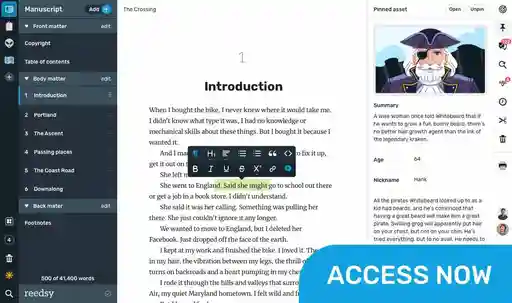Guides • Perfecting your Craft
Last updated on Oct 14, 2025
What is Plot Structure? Definition and Diagram
Dario Villirilli
Editor-in-Chief of the Reedsy blog, Dario is a graduate of Mälardalen University. As a freelance writer, he has written for many esteemed outlets aimed at writers. A traveler at heart, he can be found roaming the world and working from his laptop.
View profile →Plot structure is the order in which the events of a story unfold. In western storytelling traditions, it’s usually built out of five stages: exposition, rising action, climax, falling action, and resolution.
From Westworld and Jane Eyre to your grandma’s favorite childhood anecdote, most stories seem to follow this architecture. It dates back to Aristotle’s Three-Act structure, which divides a story into a beginning, middle, and end, and it was further elaborated on by German novelist Gustav Freytag, among others, who proposed a “technique for drama” — a five-stage plot structure that is now better known as Freytag’s pyramid.
Q: What is the difference between “story” and “plot” in narrative craft?
Suggested answer
Story is a description of a connected series of events, with a clear beginning, middle and ending, while plot is the organization of those events – how we get from beginning to middle to end. So, for example, you might have a plot where events are ordered chronologically or where you move back and forth in time, or there could even be different threads within your manuscript.
To create an exciting and enthralling story, where readers will feel compelled to turn the page to find out what happens next, think about change and conflict. These should drive events and motivate your characters until the story reaches a satisfying conclusion. What conflicts or challenges do your characters face as the story progresses? How do these characters develop?
To create a successful plot, carefully think about organizing the events in a way that feels effective and purposeful. What are the best places to start and finish? Are there enough 'hooks' to keep readers engaged? Is the tension building up before a final resolution? Sitting down and plotting out before putting pen to paper (or opening up that blank document!) can really help you ensure that you are hitting that beginning, middle and ending in a satisfying way that will sustain your readers' curiosity and engagement with your writing.
Jenna is available to hire on Reedsy ⏺
Plot is what actually happens in the book. The sequence of events that takes place. While the story is more about the reasons behind what happens. Why does your main character want what she wants? What is she feeling and thinking at any given point? What do characters feel about each other and why? Story dives a bit deeper into the heart of the book, and not just the events that transpire. Strong books have both a strong plot and a strong story to them.
Melody is available to hire on Reedsy ⏺
In this post, we’ll look at the basic elements of plot structure in more detail. We’ll use Tolkien’s Fellowship of the Ring as an example with each stage. Though it may seem strange to demonstrate a five-step process with the first part of a trilogy, each book in The Lord of the Rings series has a complete plot with a distinct start and finish.
Plot Structure in Five Steps:
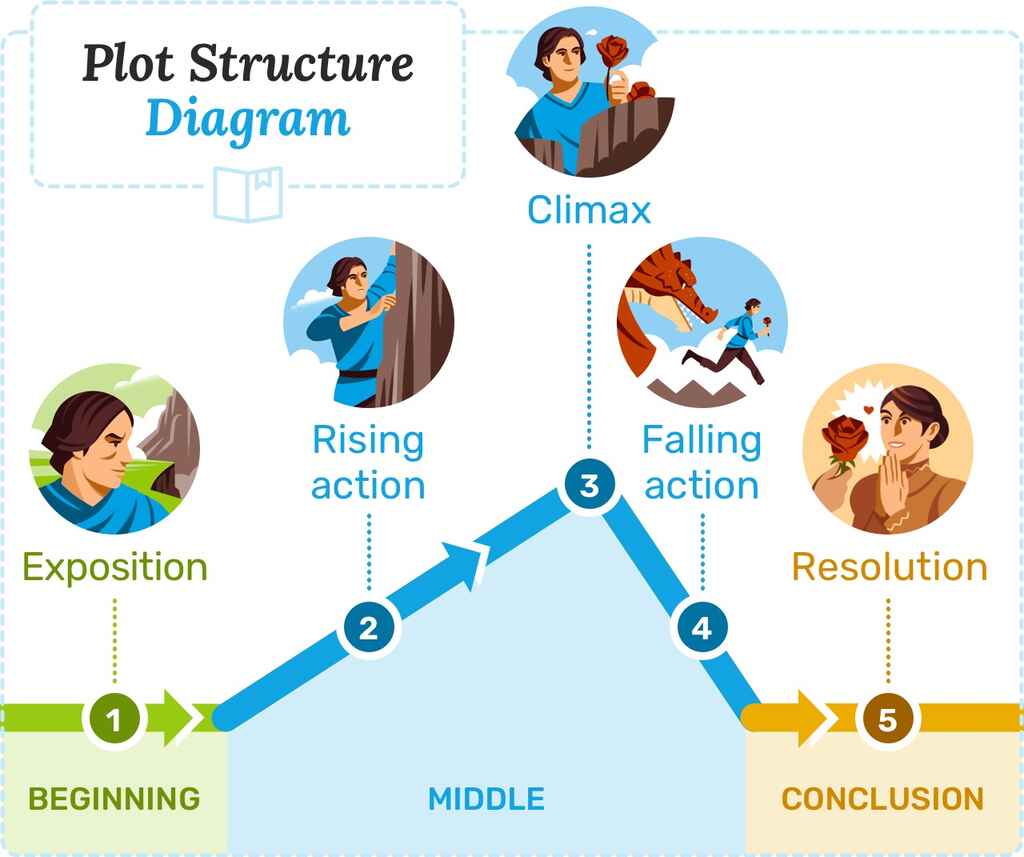
🧐
Which plot structure is right for your book?
Take our 1-minute quiz to find out.
1. Exposition
To kick off your story, you'll need to introduce your main characters and the world they inhabit , thus laying the groundwork for the story ahead. This segment is known as the exposition, and it serves to present the 'ordinary world' or the status quo for your characters.
Q: What are effective techniques for incorporating exposition into a story without disrupting the flow or pacing?
Suggested answer
I see poorly integrated facts in nonfiction all the time. You'll be reading beautiful prose and all of a sudden you're hit with what reads like a copy-and-pasted section of Wikipedia. Writers need to take the facts and make them their own. That means finding ways to make them vivid and immediate to the reader and weaves them into the narrative.
Susanna is available to hire on Reedsy ⏺
The best way to get exposition in is through dialogue. The caveat, of course, is to be careful that it comes across naturally. For instance, if your characters are telling each other things they would know, the reader will know you're only doing that to get the information to the reader, which will greatly reduce their suspension of disbelief.
The second best way, in my opinion, is through thoughts. Again, though, the character needs to think things they would actually think in their situation. For instance, in a fantasy novel, if you drop a big infodump of the world's setting, or the way machines work, or how various monsters are classified, etc., it won't be believable because there's no reason for the character to think things they already know. You could show them working through various possibilities in their mind, coming to correct conclusions, that kind of thing, but the process has to appear honest. Always assume your reader is intelligent, and is capable of sensing expositional shortcuts.
Brett is available to hire on Reedsy ⏺
Example: “One ring to rule them all.”
In Tolkien’s The Fellowship of the Ring, the 'ordinary world' is depicted through the lively and peaceful lives of hobbits in the Shire. It's only when an inciting incident jolts your character out of their comfort zone that the real action of the story gets underway. In this case, Frodo Baggins inherits a ring from his cousin Bilbo, but Gandalf reveals to him that it's the Ring of Power sought after by the dark lord Sauron 一 Frodo must embarks on a quest to destroy it.
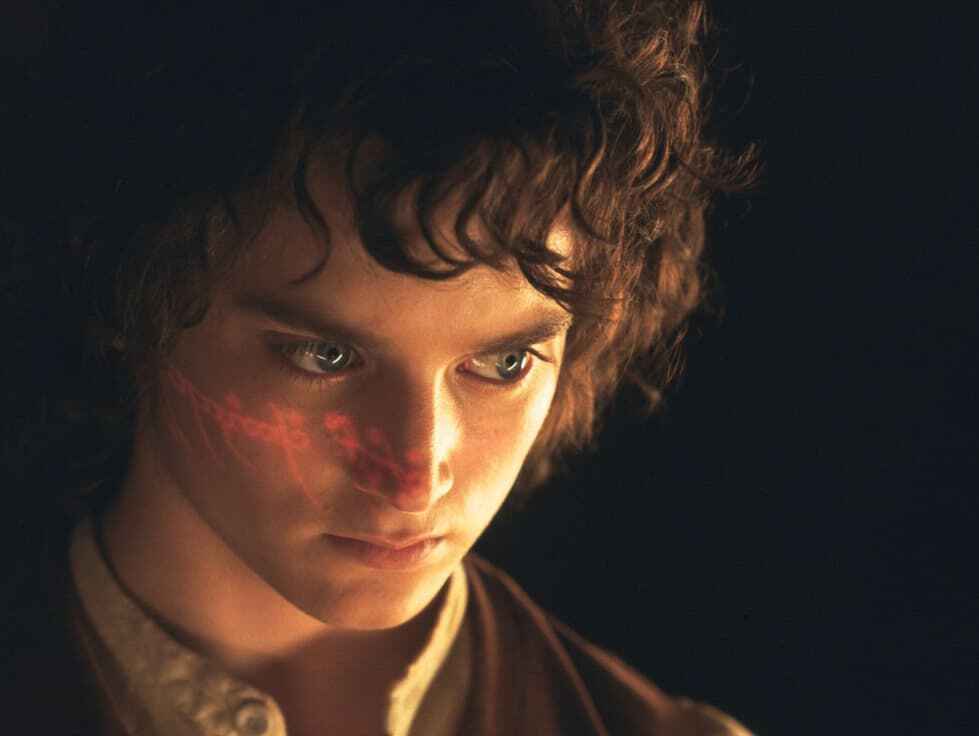
☝️ We dive deeper into each of these five stages in this article on story structure. Also, if you’re keen to try to incorporate these “beats” into your own writing, get our free template below.
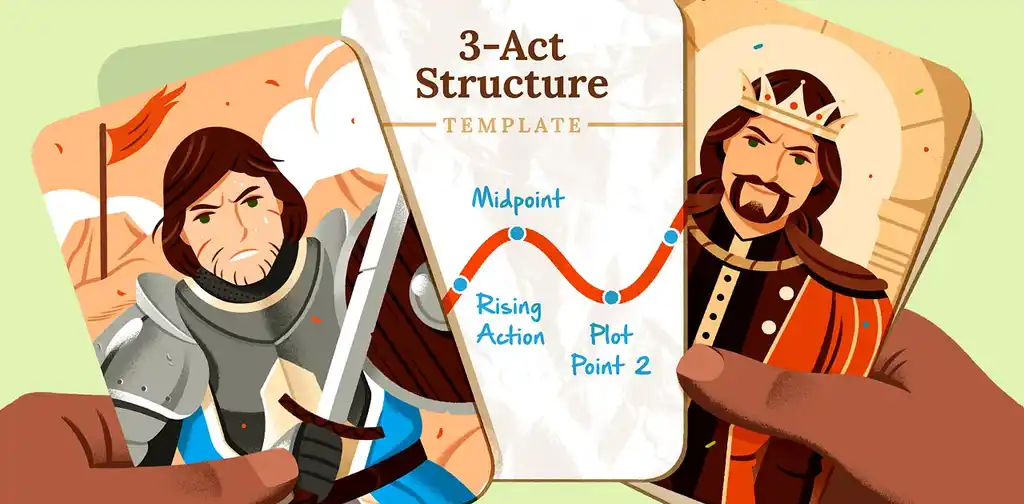
FREE RESOURCE
Three Act Structure Template
Craft a satisfying story arc with our free step-by-step template.
2. Rising Action
Once your protagonist is on a journey to accomplish something, the story truly comes alive and things start to happen. This sets the stage for a series of events in which the character faces ever more challenging internal and external conflicts, and makes both allies and enemies.
Q: What are the signs that the middle of my story isn't working?
Suggested answer
People tend to rush through the middle because the beginning and ends is more exciting to focus on haha. We can often see signs of this if it feels as though there's either a lot of recap or constant going from scene to scene (this happened, then this, then this).
We still want tension and emotional moments in the middle; it's good to break up the transitions with these.
One more trick I suggest is asking yourself "What is the goal of this scene/this moment?" or "What am I hoping this does for the reader or plot?" We still need to be thinking of the internal and external motivations as we move through the middle chunk.
Val is available to hire on Reedsy ⏺
When there are no more problems to be solved or there is not enough conflict and tension in the middle to keep readers reading. There must be plenty of conflict and tension and the major problems of the story should not be resolved until the end of the book.
If there is no subplot and the pace slows. Another way is to have someone else look over your book and give you honest feedback on the weak areas that concern you.
Melody is available to hire on Reedsy ⏺
Example: “I will take the Ring to Mordor. Though I do not know the way.”
Frodo and his companions face many challenges, like the dreadful Black Riders, the freezing mountains, and the tension among some people in the group that the ring stirs up. The Fellowship, now made of nine valuable members, learns that Saruman has joined the enemy side.
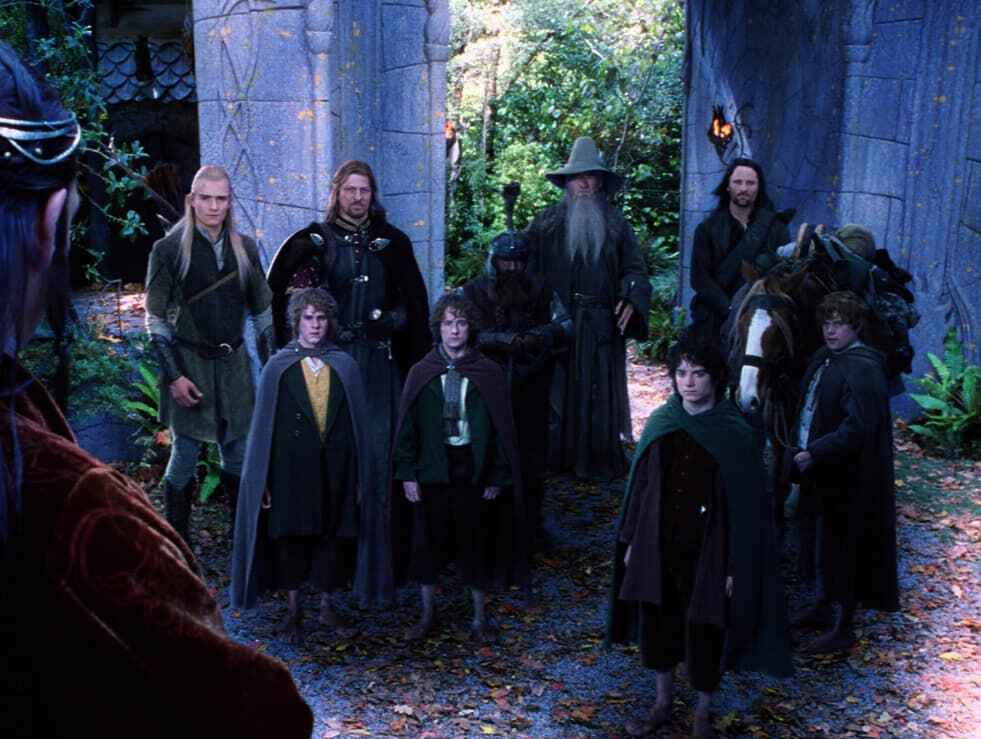
This part is known as the rising action, it forms the bulk of the narrative, and it culminates in the narrative's emotional high point — the climax.
3. Climax
The climax in a story is the point where tension reaches its peak. It’s a pivotal moment or event that marks the point of no return for the character.
Example: “Fly, you fools.”
As the fellowship passes through the Mines of Moria, they confront a menacing creature, a Balrog. Gandalf fights off the beast, allowing the others to escape, but at the cost of his own life.

While the climax may not be the final obstacle for a protagonist, it is usually what induces them to truly take action to resolve their problem.
Q: How can authors effectively build tension leading up to the climax?
Suggested answer
Well, the main method is to up the stakes as you go along. The more it matters emotionally to the characters and externally to their circumstances and the world around them, the more important that climax becomes. Every time you increase the stakes, the anticipation of readers goes up surrounding the climax and what might result. The final confrontation between hero(es) and villain becomes and edge-of-the-seat affair.
If you struggle with this, the technique I recommend is to examine the plot questions asked and answered. All plots are effectively a series of questions asked and answered. When you ask and how soon you answer is part of building tensions. Some questions carry over several scenes, some are answered right away. Some last whole chapters or several chapters. Some are asked at the beginning and not answered until the end, like the main driving core quest question of will good conquer evil? Will the protagonist get what he or she wants or needs? Will the villain prevail?
Make sure you are answering the questions you ask in appropriate places. Yes, you may want to set up a sequel and leave a few things hanging but the trick is to pick the right questions. The rest need to be answered, and figuring out which questions depend upon that climax and asking more and more of them as you lead up to it is a really great way to increase suspense and anticipation and lend that sense of urgency to the climax that keeps readers turning pages and dying to know what happens.
Bryan thomas is available to hire on Reedsy ⏺
Stakes need to be continually raised as the story builds to a climax. The problem[s] should be getting more and more difficult until the climax is reached.
Melody is available to hire on Reedsy ⏺
Subtle foreshadowing is a solid way to build tension. Hinting at what's to come can prime the reader for the climax without revealing exactly what's coming—just that something is coming.
Well-written, lower-level conflicts between characters is another effective tool to build tension: short arguments, occasional emotional blow-ups, etc. These are, in effect, a kind of foreshadowing themselves, setting the reader up for the finale, whatever it may be.
Brett is available to hire on Reedsy ⏺
4. Falling Action
Following the climax, the story's tension begins to wane as unresolved issues and minor conflicts start to find closure. This beat serves as a sort of decompression chamber, allowing both characters and readers to step back from the intensity of the climax, and process “all that happened.”
Example: “You suffer, I see it day by day.”
Following the tragic loss of Gandalf, the Fellowship takes refuge in the mystical woods of Lothlórien, where they grapple with the gravity of their quest and reflect on their individual responsibilities. Boromir is seduced by the ring's power and tries to steal it from Frodo, though the hobbit manages to escape.
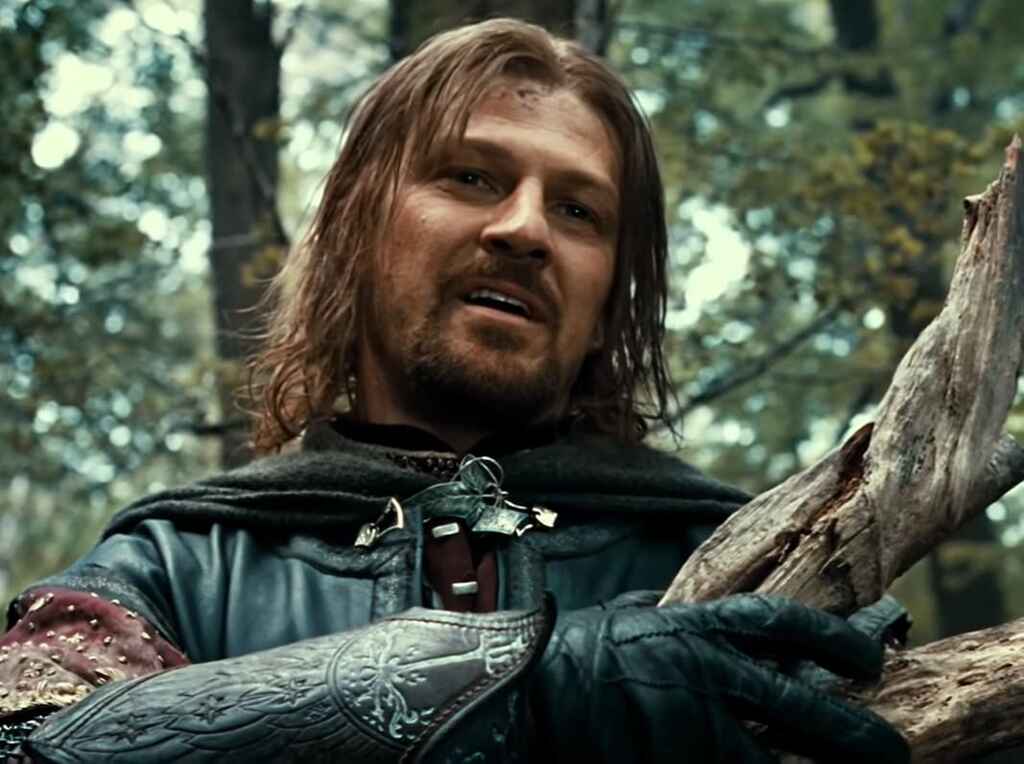
5. Resolution
The resolution (also called denouement) is the final phase in the story's plot structure, which wraps things up. While it often blends with the ‘falling action,’ the key difference is that the resolution offers closure to the story's main conflict. Essentially, it fulfills the promise of the premise set in motion by the inciting incident. That said, story endings can vary 一 some give a clear resolution, while others leave room for interpretation.
Example: “I’m going to Mordor alone.”
As for Frodo, he decides to separate from the group, fearing more of its members will be corrupted by the ring, and to continue the journey to Mordor alone (well, secretly followed by his best buddy Sam.) As The Fellowship of the Ring is only the first installment in a trilogy, the story's ultimate closure isn't reached until the final book. In spite of this, Frodo undergoes a significant character arc 一 from an unlikely and hesitant hero, dependent on other’s support, to a true leader determined to complete his mission.

And there you have them, the five key elements of plot structure. Whether you’re beginning to write a novel or working on a short story, dissecting its basic architecture can help you craft a cohesive and engaging narrative that keeps the reader turning the page.
